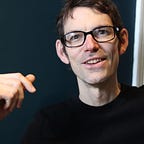Bautzen and the Sorbs
Bautzen would be a pretty but unremarkable town were it not for its association with a famous political prison of the DDR and its status as the centre of a Germano-Slavic minority, the Sorbs. They make up about 10% of the town’s population and it is the cultural capital of the community, complete with concert hall and theatre, sorbian orchestra, and a sorbian museum, which I visited.
Bautzen sits on top of a promontory in the Spree river, north of the sächsische schweiz (Saxonian Switzerland). It is at the Southern end of an area of Saxony and Brandenburg that has substantial Sorben populations. There are about 60 to 80,000 people of Sorbian descent in this area of Germany that was historically called Upper Lusatia. All the signposts in this area are in double with a German and Slavic version. The population is a well assimilated and small representation of the fact that Slavic peoples once dominated the area, with the Saale-Elbe boundary marking the furthest extent of Slavic expansion in the 6th to 10th centuries.
What does Sorben sound like?
I caught the two ladies at reception chatting in Sorben. It sounded cute. Not like Polish, but something unrecognisable, unique. They said that it was very little spoken in the city, even by those of sorben decent, but was still much used in more rural areas. They were delighted when I said I wanted to go into the entirely empty museum, and use the audio guide!
It is a grand museum for a such a small population and there’s not much to tell. They’ve never really fought any battles (on their own behalf) or even had and kings. However, the unusualness of their situation maintains interest as you find out how the Sorbs fared under different regimes, from the Bohemians and Hungarians to Saxons, to Prussians, Nazis and the DDR. Actually, the DDR treated them well and helped to revive the cultural identity, setting up the Sorben institutions in the town and even putting the protection of the Sorbian culture in the 1949 constitution.
There was a big display of Sorben tracht/peasant garb, which looked like the Slavic standard to the untrained eye, and there was a bit about the Sorb communities working in the open brown coal fields that dominated the area in the 20th century.
Indeed, the landscape between Bautzen and the Spree is featureless but for the ex-open cast mines, now unattractive lakes and reservoirs (don’t assume water on a map means interesting, especially in Brandenburg). At least one had a very fine cycle path around it, but in general the long cycle to get there and back from the boarder of Brandenburg (where the direct trains stopped) was uniformly drab. Only once I got back to the Spreewald on the way back to Cottbus did the landscape suddenly get very appealing again. I passed by the Talsperre Spremberg just outside of that city and noted how pretty it was, and how perfect for wild camping it was, with loads of old DDR abandoned holiday homes and soft sandy spots to lie down.
So despite the hot dull pedalling a very worthwhile trip. I learnt about the Sorbs, whose ancestors (the Wends) used to dominate Brandenburg and founded fishing villages of Berlin and Koln (Berlin is probably from the Wendish word for swamp, ‘Berl’ — fits!). And I spotted a great spot to camp on a future trip. All in one 9 euro inspired day trip!
